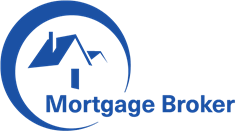What Is a Loan?

A loan is a financial mechanism that allows an individual or business to borrow money from a lender in exchange for the promise to pay back the amount borrowed, plus interest. Loans are an important source of income for lenders, and they are also the foundation of many consumer finance products like credit cards and mortgage loans.
A person can acquire a loan from banks, non-bank financial institutions, online loan providers or even private lenders. A personal loan can be used to fund a wide range of purposes, from home improvement projects to purchasing an automobile. The amount of money borrowed can be a fixed sum or a line of credit with a set repayment schedule and terms. In either case, the loan must be paid back at the end of its term and in accordance with a predetermined payment schedule known as an amortization table. A significant portion of each monthly payment goes toward the accrued loan interest, with a smaller amount going toward the original principal amount borrowed.
Most personal loans are secured, meaning that the loan is backed by something of value like a home or automobile. This type of loan is typically characterized by lower interest rates than unsecured loans, since the lender can seize the asset in the event of default. Revolving loans, such as those provided by credit cards, are usually unsecured and are a major source of debt for many consumers.
While loans are a common means of financing for both businesses and individuals, lending practices can lead to abuses. Examples of predatory lending include subprime mortgage-lending and payday-lending. Such practices are illegal and can be reported to the proper authorities for investigation and prosecution.
Whether the loan is a revolving credit facility or a traditional term loan, borrowers must be aware of how the terms are structured and agree to them before any funds or property change hands. A written agreement, or promissory note, typically sets forth all the terms of a loan including its principal amount, interest rate and repayment schedule. In addition, the loan document may establish a number of covenants or restrictions on the borrower’s activities. Some of these are required, while others are optional. For example, a borrower who signs a revolving credit facility must review the limits of the facility annually to ensure that it is in line with revenue fluctuations and to avoid having the limit reduced during a period of low revenue. The same is true for a traditional term loan, though less strictly. The borrower must also make sure the loan amount is not used for prohibited purposes. For example, a revolving credit facility is not intended to be used to purchase a firearm. However, it is not uncommon for companies to use revolving lines of credit to buy equipment or other large assets. The lender will typically review the business’s financial statements and other documents before approving such a request. In some cases, the lender will require collateral in addition to the loan documentation.
